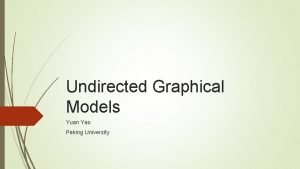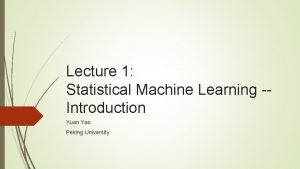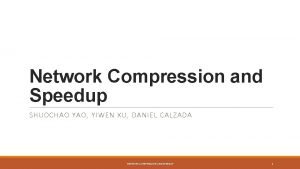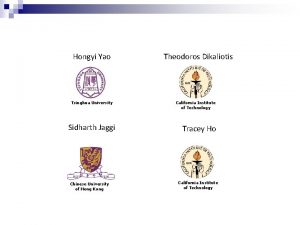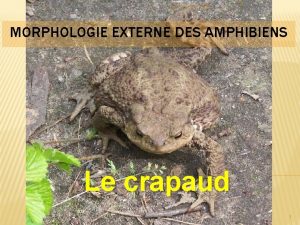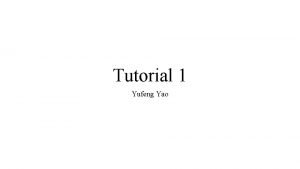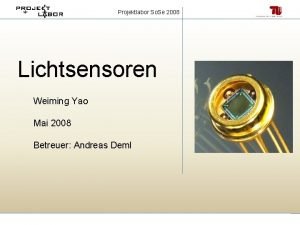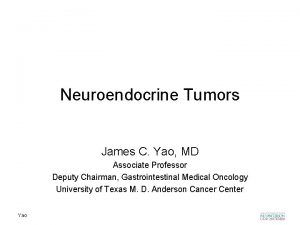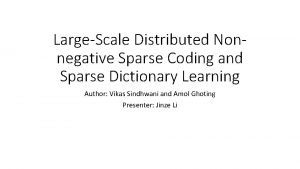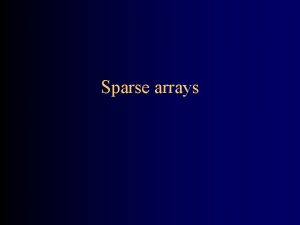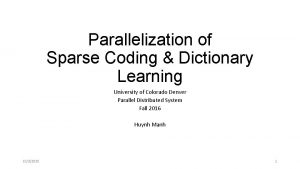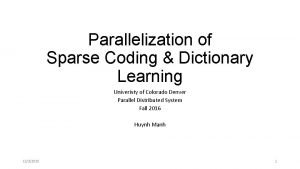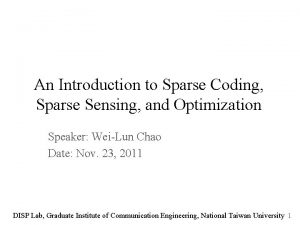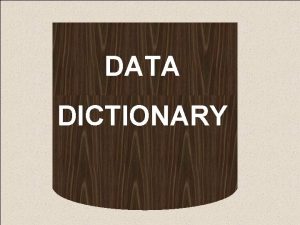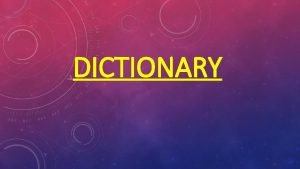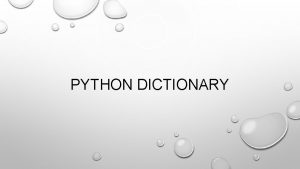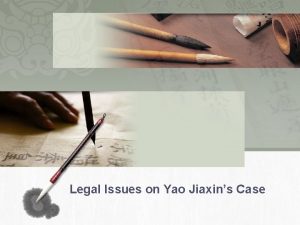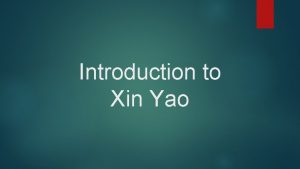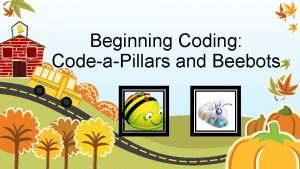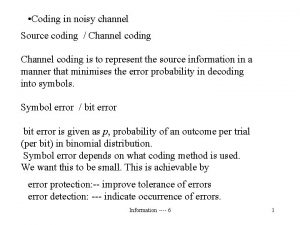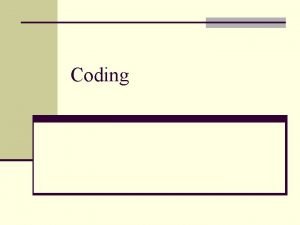Sparse Coding and Dictionary Learning Yuan Yao and
















- Slides: 16

Sparse Coding and Dictionary Learning Yuan Yao and Ruohan Zhan Peking University

Reference: Andrew Ng http: //ufldl. stanford. edu/wiki/index. php/UFLDL_Tutorial

Sparse Coding The aim is to find a set of basis vectors (dictionary) such that we can represent an input vector x as a linear combination of these basis vectors: PCA: a complete basis Sparse coding: an overcomplete basis to represent (i. e. such that k > n) The coefficients ai are no longer uniquely determined by the input vector x Need additional criterion of sparsity to resolve the degeneracy introduced by overcompleteness.

Sparsity Penalty We define the sparse coding cost function on a set of m input vectors as where S(. ) is a sparsity cost function which penalizes ai for being far from zero. "L 0 -norm”: L 1 penalty: log penalty:

Scale freedom In addition, it is also possible to make the sparsity penalty arbitrarily small by scaling down scaling up by some large constant. To prevent this from happening, Olshausen and Field 1996

Identifiability: Scale One can remove the scale degree of freedom either in constraint form Or Lagrangian form: where Frobenius norm) is simply the sum of squares of the entries of A (squared

Nonlinear Optimization Bi-variate cost: not jointly convex, not differentiable But J(A, s) is convex in A fixed s, and convex in s fixed A.

Alternating Optimization Initialize A randomly Repeat until convergence Find the s that minimizes J(A, s) for the A found in the previous step (LASSO) Solve for the A that minimizes J(A, s) for the s found in the previous step (Ridge Regression -> SVD)

Smoothing So our final objective function: where the third term Frobenius norm) is shorthand for is simply the sum of squares of the entries of A (squared Then you have a smooth objective function, restricted convex in A and s Gradient descent such as BP algorithm can be applied here

Dictionary Learned from natural image patches http: //ufldl. stanford. edu/wiki/index. php /Exercise: Sparse_Coding http: //ufldl. stanford. edu/wiki/resources /sparse_coding_exercise. zip

Adjacent features should be similar?

Topographic Sparse Coding: Group LASSO Group adjacent features in group LASSO norm Example: 3 -by-3 neighborhood as ‘adjacency’

A Neural Network Interpretation: Sparse Autoencoder -- encoder = nn. Sequential() encoder: add(nn. Linear(input. Size, output. Size)) encoder: add(nn. Tanh()) encoder: add(nn. Diag(output. Size)) -- decoder = nn. Sequential() decoder: add(nn. Linear(output. Size, input. Size)) -- tied weights if params. tied and not params. hessian then -- impose weight sharing decoder: get(1). weight = encoder: get(1). weight: t() decoder: get(1). grad. Weight = encoder: get(1). grad. Weight: t()

Deep Networks

Other structures? -- Tight frame

When does Dictionary Learning work? Daniel Spielman, Huan Wang, and John Wright, Exact Recovery of Sparsely. Used Dictionaries, ar. Xiv: 1206. 5882 Agarwal, Anandkumar, Jain, Netrapalli, Learning Sparsely Used Overcomplete Dictionaries via Alternating Minimization, ar. Xiv: 1310. 7991 Sanjeev Arora, Rong Ge, and Ankur Moistra, New Algorithms for Learning Incoherent and Overcomplete Dictionaries, ar. Xiv: 1308. 6273, 2013 Barak, Kelner, and Steurer, Dictionary Learning and Tensor Decomposition via the Sum-of-Squares Method, http: //arxiv. org/abs/1407. 1543, 2014
